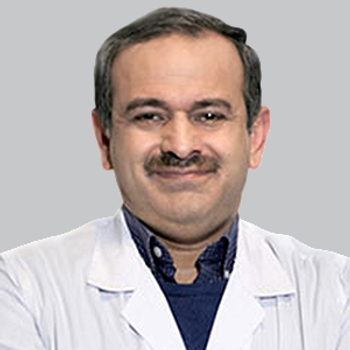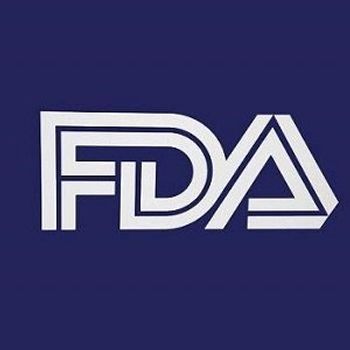
NeuroVoices: Christina Briscoe, MD, on Improving Timely and Effective Care for Infantile Epileptic Spasm Syndrome

The pediatric epileptologist at Boston Children’s Hospital discussed national variability in treating infantile epileptic spasms syndrome and the evidence gaps that continue to shape clinical decision making.
Infantile epileptic spasms syndrome (IESS) is a severe and highly time-sensitive pediatric epilepsy in which rapid recognition and prompt initiation of first-line therapy, typically ACTH, high-dose steroids, or vigabatrin, is essential for preserving development and improving outcomes. Despite strong evidence supporting early treatment, delays in diagnosis and disparities in access remain common. Guidance from groups such as the ILAE has encouraged more standardized pathways, yet real-world practice still reveals wide differences among centers.
To better understand national treatment patterns, Christina Briscoe, MD, an epileptologist at Boston Children's Hospital, and colleagues from the
NeurologyLive®: What was the interest in this type of study and why was it necessary?
Christina Briscoe, MD: Infantile spasms is a very particular type of epilepsy where our treatments differ from those used for other pediatric epilepsies. It is also one of the only epilepsies where we know that time is brain, so starting appropriate treatment quickly is extremely important for long term outcomes. Within the Pediatric Epilepsy Research Consortium, our Infantile Spasms Special Interest Group meets monthly and collaborates on projects focused on improving diagnosis, reducing delays, and ensuring that every child receives timely and effective care regardless of geography.
During these meetings, many of us were asking the same questions. Who is using which treatments. Who uses sequential therapy or combination therapy. What do people do when standard therapies fail. How often are centers referring for epilepsy surgery. Because there had not been a national evaluation of treatment practices for more than a decade, and because new evidence and guidance had emerged, there was a lot of uncertainty about real world practice. We also knew from our prior work that some children, including those on public insurance and those whose parents identify as Black and non Hispanic, are less likely to receive standard care. We wanted to understand where there was consensus, where there was variability, and how these patterns might inform improvements for centers of all sizes.
What are some of the reasons behind variability in treatment decisions for IESS outside of first and second line therapy?
There is very strong consensus around the first two treatments. Most centers use hormonal therapy and vigabatrin because randomized trials and prospective observational studies support that approach. Beyond that point, though, the evidence is very limited. Once those first two therapies fail, clinicians often rely on local culture, guidance from mentors, available resources, and personal experience. Access to ketogenic diet programs, epilepsy surgery, and metabolic or genetic testing varies widely.
Outside of the first line options, most antiseizure medications only work in about five to ten percent of patients with spasms. Historically, pharmaceutical companies have not focused on infantile spasms, and these patients are often excluded from clinical trials because they are challenging to treat. That lack of industry engagement has contributed to a long stretch without new therapies. Vigabatrin, which was approved in 1980, is still the most recent drug approved specifically for spasms. The variability we observed is driven largely by that lack of evidence and the limited number of effective options.
Going forward, what types of research would be most helpful to answer some of the lingering questions?
Within our group, we are already pursuing next steps. The current paper gave us a foundation, but several questions were not answered. For example, which hormonal therapy do centers use first. When do clinicians refer for epilepsy surgery. Those items were not clearly described in the treatment pathways. A second, more detailed survey led by Dr Akshat Katyan at Texas Children's Hospital focuses on these questions and is being prepared for publication.
In parallel, Gorzde Erdemir, MD, at Penn is examining treatment pathways from other countries to understand how global practice compares. There are also broader unanswered questions, such as whether combination therapy improves long term outcomes, what the optimal sequence of therapies should be, when ketogenic diet should be started, and how early surgery should be considered. We also need clarity on adverse event monitoring. Some centers reported using PJP prophylaxis, but we do not know whether that is beneficial or whether it introduces new risks. Beyond generating evidence, we have an implementation gap. Even for treatments that we know work, there are disparities in who receives them. To address this, we have created a participatory action research group with families across the United States. Together, we are mapping root causes of barriers and identifying potential solutions.
Are there things we can do from a system level to make research on infantile spasms easier?
Yes, and it depends on the type of research. Retrospective studies that rely on medical record review are relatively efficient and good for hypothesis generation. Prospective studies are far more resource intensive. Infantile spasms affects about one in 3000 children. It is technically a rare disease but still common enough that meaningful studies require multiple centers. Most grants do not adequately fund multicenter coordination or staff support, which limits what studies can accomplish. One of the goals of our group is to streamline processes and reduce the workload for centers that want to participate.
There are also innovative patient centered approaches, including direct data entry from families into research registries. More broadly, the research infrastructure in medicine was built around common conditions such as stroke or diabetes. Rare diseases require a different approach. As the rare disease ecosystem continues to grow, infantile spasms research should benefit. Much of this also comes down to funding. Accurate data entry, quality checks, and multicenter collaboration require significant staff time. Clinicians who see the highest number of patients often have the least available time to participate. Groups like ours can help reduce the burden so that more expertise is represented.
Before we wrap up, was there anything in the paper that you felt was important but did not receive enough attention?
Every child with spasms deserves timely diagnosis and effective treatment. Two areas that warrant much more attention are ketogenic diet and epilepsy surgery. Only 58 percent of treatment pathways included ketogenic diet, even though it is one of the most effective therapies for drug resistant spasms. Only 46 percent included referral for epilepsy surgery, even though children with focal, surgically treatable lesions can become seizure free.
Discussing brain surgery for an infant can be a difficult conversation, especially if the seizures appear brief or subtle to families. But including surgical evaluation in standardized pathways improves consistency and outcomes. For centers without ketogenic diet programs or pediatric epilepsy surgery, the challenge becomes ensuring timely referral to a center that provides these services. That involves insurance navigation, clinician training, and clear protocols. Our second survey is also examining whether the lack of pathway documentation reflects true underuse or simply a lack of formal protocol. There is still much we do not know, but we also have several well established best practices that are not being implemented consistently. Our task is to fill the evidence gaps for children who do not respond to standard therapy and to ensure that standard therapy reaches every child.
Transcript edited for clarity.
Newsletter
Keep your finger on the pulse of neurology—subscribe to NeurologyLive for expert interviews, new data, and breakthrough treatment updates.




































